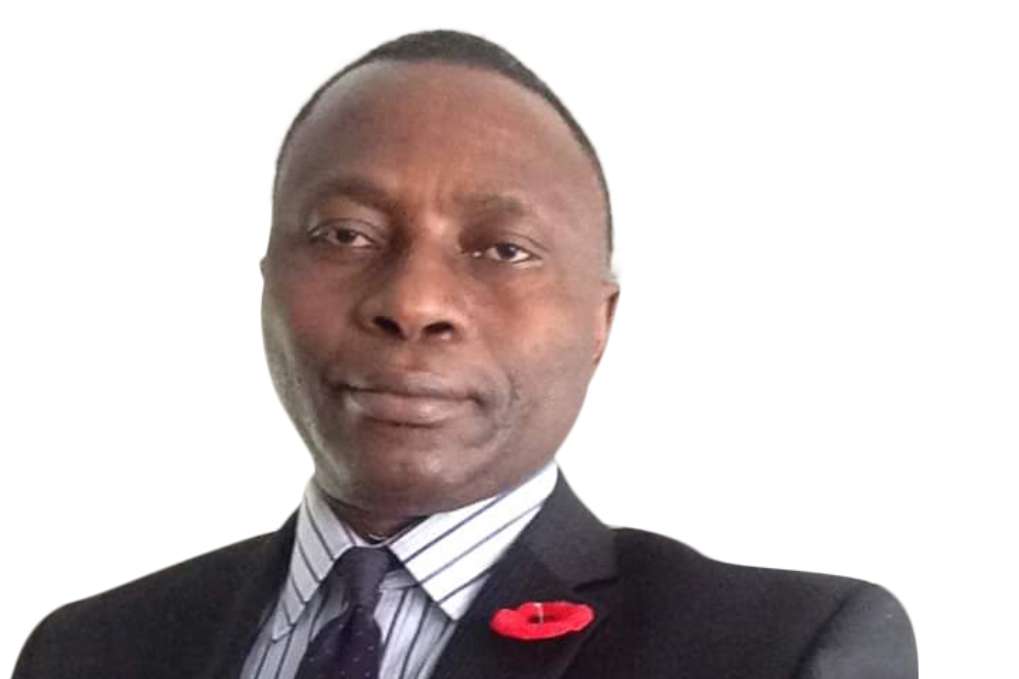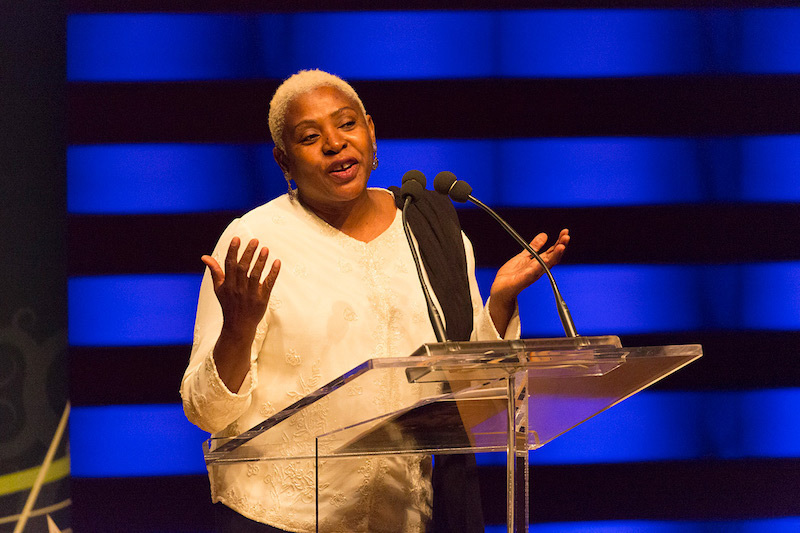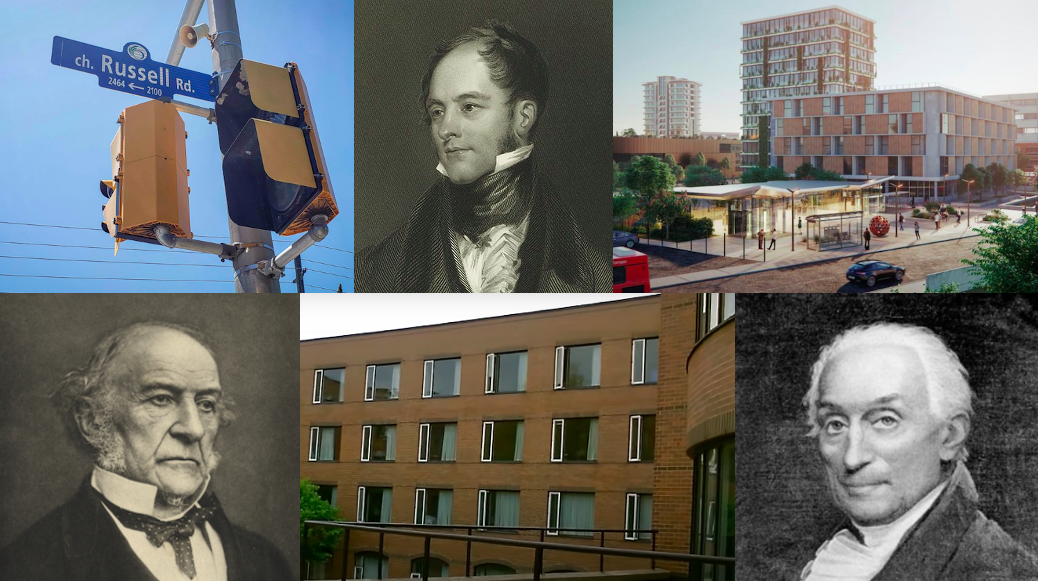Russell. Goulbourn. Dundas. Vaughan. Gladstone.
These are the familiar names of Ontario streets, towns and schools, some right here in Ottawa.
To Godlove Ngwafusi, however, the names are a constant reminder that Canada’s racist history is hiding in plain sight in the capital region and across the country.
“You know how the rhyme goes: sticks and stones may break my bones… well in this case, names do hurt me,” said Ngwafusi, co-ordinator of the anti-Black racism committee of the African Canadian Association of Ottawa, an umbrella organization that represents more than 50 communities in the city that share African and Caribbean ethnocultural heritage.
In the wake of the anti-racism protests spawned by the Minneapolis police killing of George Floyd in May, a growing movement in Canada is highlighting systems of oppression and systemic racism. Citizens have begun to question commemorative names, monuments and other landmarks that honour racists from the past — and they are pushing for removals, renamings and other changes.
In some cities, anti-racism advocates want the removal of statues or the renaming of buildings that pay tribute to Sir John A. Macdonald — Canada’s first prime minister and a key architect of the Residential Schools system that was an instrument of the “cultural genocide” of Indigenous people in Canada.
Russell Township sparks discussion
In June, a petition was circulated in Russell Township — east of Ottawa — urging council to consider renaming the municipality because of its association with Peter Russell, a slave owner who was a top administrator in Upper Canada for several years in the late 1700s.
Among the advocates for renaming Russell and other sites with racist namesakes is Ngwafusi, a leading voice in the Ottawa’s Black community.
“(We all) want to live in harmony with our community. And to live in harmony you have to be respectful of all human beings. To be respectful, you need to start by acknowledging their humanity,” he explains. “One of the ways to acknowledge (our community’s) humanity is by removing that reminder of how our ancestors were treated like cattle, like objects, like property — owned, bought and sold.”

In response to the petition, Russell Mayor Pierre Leroux proposed to shift the township’s namesake to a new person named Russell to disassociate the town with slavery and racism.
Substituting Peter Russell for another person named Russell is a “Band-Aid solution,” says Ngwafusi.
“You know what Band-Aids do right? They never solve the problem. It’s just a cosmetic, superficial solution,” he said. “Keeping the name Russell is a slap in the face every time I wake up.”
Cait Dignard, who is Black and a former resident of Russell who now lives in Ottawa, told Global News in June that the racism and micro-aggressions she faced growing up in Russell were part of what pushed her and her family away.
While Leroux said his solution to rededicate the town would strike a compromise, Dignard said this was only a way to avoid addressing systemic racism.
“The Township of Russell would rather just not spend money. And it hurts me to know that money is worth more than Black lives and safety and pain,” she said.
In light of the conversation surrounding renaming Russell township, Ngwafusi wants streets bearing Russell’s name in Ottawa changed, too. Ottawa is home to Russell Avenue in Sandy Hill and Russell Road, an arterial route that runs between Russell Township and Riverview in south-end Ottawa.
A neighbourhood along Russell Road in Ottawa is served by the Russell Heights Community House.
Ngwafusi said we also need to re-examine a host of other landmarks named after individuals linked to slavery and racism.
“Imagine every time you receive mail, or write down your home address, that identifies you as living in Russell, or any street named after a slave owner,” he said, explaining how it would feel to be a Black resident living on such a street.
“One of the ways to acknowledge (our community’s) humanity is by removing that reminder of how our ancestors were treated like cattle, like objects, like property – owned, bought and sold.”
Godlove Ngwafusi, coordinator of the Anti-Black Racism Committee for the African Canadian Association of Ottawa
Ottawa Mayor Jim Watson has said he has no objection to changing landmark names in Ottawa if that is what residents want.
“I think it should come from the grassroots,” Watson said during a Nov. 17 video Q-and-A session with Capital Current reporters. “If someone on a street like Russell, for instance, wants to change a name because of historic information that has come about that shows that the individual is not worthy of an honour like a street name, then residents can take action.”
Russell House at Carleton University, one of several residence buildings named for townships and counties in Eastern Ontario, can also be traced to the Upper Canada slave owner, who resisted efforts to abolish slavery in the British colony.
Watson, who lived in Russell House during his time as a Carleton student in the early 1980s, is encouraging Ottawa residents to start petitions and send them to their city councillor.
“It would come to council and I would support the name change based on the community’s suggested new name,” he added.
Watson noted that this issue came up during consultations for new LRT stations — including the planned “Gladstone” station in Little Italy, a neighbourhood that’s also bisected by one of downtown Ottawa’s main east-west streets, Gladstone Avenue.
William Ewart Gladstone, Liberal prime minister of the U.K. between 1868 and 1894, was the son of one Britain’s major Caribbean slave owners in the early 19th century. As a Tory politician early in his career, Gladstone defended slavery in Parliament, called for gradual abolition and benefited financially after his family was richly compensated upon the freeing of slaves throughout the British Empire in 1834.
In response to the Black Lives Matter movement this year, the University of Liverpool — in the city of Gladstone’s birth — announced in June it will rename Gladstone Hall in the student village portion of the campus. Meanwhile, in September, a review of portraits on display in the U.K. Parliament concluded that paintings of famous politicians with links to slavery — including Gladstone — should have plaques acknowledging this.
“One of the (LRT) stations is at Gladstone,” said Watson. “So we chose not to name the station Gladstone, but to name it Corso Italia — which drops you off at the centre of Little Italy,” he explained. “We are not extending the name Gladstone to another facility, (rather) we are actually changing it to something that is morally more acceptable than Gladstone and geographically more sensible.”
Change in Rideau-Goulbourn
The Russell Township renaming petition is part of a broader conversation about the names of Canadian landmarks and whose legacies they preserve.
On Nov. 2, Rideau-Goulbourn’s city councillor Scott Moffatt released an episode of his regular podcast entitled “A Troubling Discovery Calls for a Name Change in Rideau-Goulbourn”. In the episode, the councillor said it’s time to “get the ball rolling” on a new name for the west-end ward as it is named after slave owner Henry Goulburn. (The historic Ottawa-area township of Goulbourn, which is the origin of the ward name, reflects a misspelling of Goulburn’s name that was never corrected.)
On Nov. 13, Moffatt announced in a newsletter to constituents that he is looking to have a new name for the ward by the 2022 municipal election and that he would refer to the electoral district as Ward 21 until a new name is selected.
Henry Goulburn was a 19th-century British politician. He was also the absentee owner of a 2,000-acre plantation in Jamaica. At one point, Goulburn had more than 250 slaves on his plantation. Goulburn never visited Jamaica or Canada, but he held senior positions in the British government in the first half of the 19th century.
Goulburn did not have a direct connection to the rural community that bears his name. He lived, worked and died in England. Moffatt said Goulburn does not have many redeeming qualities and does not deserve to be honoured any longer.
“As a councillor, I’m an elected official, I get paid to do a job. And I do that job. But that doesn’t mean that I’m worthy of a name,” Moffatt said. “I’m not expecting someone to go out there and name a community after me, just because I’m an elected official. Yet 200 years ago, that’s what people did.”
Moffatt made the decision to change the name of the ward without consulting his constituents or holding a public discussion. He said having a public discussion on whether to rename the ward would not be appropriate.
“We have people that live in this country, that have grown up in this country — born and raised —that descend from people that escaped slavery,” Moffatt explained. “And now, we are going to go have a public debate on whether or not we should honour a slave owner or not? I don’t see that as productive and I don’t see it as healthy for the community or anyone involved.”
Moffatt said that as a city councillor, he has the right to make the decision without consulting the public. He said in a ward with a population of about 30,000, he does not get enough feedback from the public to make a decision representative of the majority.
“I have to make decisions, often without the ability to truly know what everyone feels. Often I have to make decisions based on evidence and facts,” he said. “And that’s what I’m doing here. You know, I think I said this multiple times. I’m not elected to be a pollster.”
Moffatt said he has received some backlash on social media for his decision.
“The feedback isn’t constructive. It’s vitriolic. And it’s, you know, I think I summarized it by saying, you know: ‘Slavery, get over it. What’s done is done, who cares about slaves?’ That’s essentially the feedback I’m getting.”
While Moffatt declined to engage the public in the decision to change the ward’s name, the Goulbourn Museum is initiating a dialogue on the life and legacy of Henry Goulburn, whose portrait in the U.K. Parliament has also been part of that institution’s probe of slavery connections in its art collection.
The museum will host a lecture series in February called “What’s in a Name?” to discuss the histories behind various place names in the community. They are kicking off the series with a “transparent look into the life of Henry Goulburn and his connection to slavery.”
Tracey Donaldson, the museum’s president, said the museum made the discovery about Henry Goulburn’s connection to slavery in the summer, and they are still in the process of conducting historical research into his life.
The museum announced the event in October, two weeks before Moffatt announced his own discovery of Henry Goulburn’s connection to slavery on his podcast. Donaldson said Moffat contacted her after the announcement to say he had also learned about Goulburn’s ownership of slaves.
Museum opens a discussion
The museum will take on a facilitative role in the public forums, Donaldson said. She said the museum has been contacting local community groups who can provide diverse perspectives on Henry Goulburn’s legacy as a slave owner, including Black History Ottawa and the African Studies department at Carleton University.
“We’re trying to create an open discussion that kind of discusses the repercussions of historical naming trends, and one that involves some diverse perspectives so that everybody can really be better informed on what’s happening, and then decide where they stand.”
Donaldson acknowledged she was disappointed the museum had not made the slavery connection sooner.
“As part of the Goulbourn Township, I think we’ve always felt our stories started after Goulbourn Township was started, and we focus more on that settling aspect than really thinking about where the name came from.”
While the primary goal of the discussions is to educate the community, Donaldson said the museum will act as a representative of the community. It is too early to tell what that action will be, but they will be informed by the community, she added. Possible next steps include renaming the museum or creating an exhibition about Henry Goulburn and the legacy of slavery in Canada.
“I know that whatever comes out of this process is not going to make everybody happy, and not everybody is going to agree on the next steps or how we should do things. But I do believe we have a crucial role in at least letting the community participate in that discussion.”
Henry Goulburn is also the namesake of Goulburn Avenue in Sandy Hill and Henry Goulburn Way in Stittsville.
Canada’s forgotten history of slavery
Canada’s history of Black enslavement dates back to the mid-17th century in New France, where French colonists would buy and sell slaves from nearby British colonies. Black enslavement continued in British North America after New France was conquered in 1760. In total, about 3,000 Black people were enslaved in British North America, including between 500 to 700 in what is now Ontario.
Slavery was abolished in British North America on Aug. 1, 1834 under Britain’s Slavery Abolition Act of 1833.
Afua Cooper, an African Canadian Studies professor at Dalhousie University in Nova Scotia, said the history of slavery in Canada is often ignored. She said this has negatively affected how Black Canadians are perceived.
“We feel that Blacks are newcomers, when in fact, Black people have had a 400-year history in this country. We feel that Black people are not deserving,” Cooper explained. “Because society at large has never really seen Blacks (as) contributing people to society, as helping to build this country, which we have done through the process of enslavement when Black people were slaves in this country and worked for free.”

Cooper said anti-Black racism is ingrained in Canadian society. She said one way to combat this is through reforming school curriculum to include Black Canadian history. Cooper said Black teachers, parents and students have been pushing school boards to include Black history for 50 years.
Cooper said she is now starting to see the inclusion of Black history in Canadian schools in the wake of this year’s killing of George Floyd, along with the anti-racism protests it ignited.
“It’s really, really heartwarming, though, to see that there’s some opening. I think for the first time, school boards are willing to listen. And as I said, it’s because of the activism of mainly Black people.”
For Cooper, this interest among the public in learning about Black history is a turning point. She has noticed that many people are starting to seek out an education on Black history and anti-racism on their own.
“If the end goal is really to promote racial justice, and mitigate anti-Black racism and other forms of racism, xenophobia, oppression and discrimination, then we need to go we need to go deeper than (name changes). There are lots of ways in which that can be done through education. … The impact needs to be more than at a surface level.”
Adam Nuraddeen, current issues co-ordinator at carleton’s black student alliance
“The global protests that erupted in wake of the murder of George Floyd have also sent many, many people who are not in school — millions of people — to popular schools,” Cooper said. “And by that, I mean, you see people are creating their own reading lists, people are creating their own film lists. People are self-educating, and that is a good thing.”
Cooper said, while she “wholeheartedly” agrees with the renaming of streets that are named after slave owners, there needs to be a discussion with the community about why the change needs to be made. These discussions can be teaching moments about Canada’s history of slavery.
“Just to rename (streets) without context, rename (streets) without a conversation. I’m not for it. Like I said, we want people to know why. And I think it’s fantastic that these things are happening right now. Because for the first time again, it’s seeping into popular consciousness. It’s seeping in popular culture.”
Carleton University joins the conversation
As students advocate for Canadian universities to implement more Black history into their curricula, the renaming issue has also reached Carleton University.
Of the 11 student residence buildings at Carleton, Russell House and Dundas House are both named after figures associated with slavery. The names of the buildings were taken from the rural municipalities that surrounded Ottawa in the 1960s, the director of housing at Carleton, Laura Storey, recently told the Charlatan.
Henry Dundas — who is also the namesake of a small street in Ottawa’s Vanier community, a major street in Toronto and the Hamilton-area community of Dundas — was a major figure in British politics in the late 18th and early 19th centuries. He is widely viewed as key figure in delaying the abolition of slavery in the British Empire, and his portrait in the U.K. Parliament is among those expected to be accompanied by a plaque detailing this part of his history.
As with Benjamin Vaughan — a slave-owning 18th-century British parliamentarian who is the namesake of the Toronto-area city of Vaughan — Dundas has sparked controversy in the GTA in the wake of this year’s anti-Black racism protests.
Adam Nuraddeen, current issues co-ordinator at Carleton’s Black Student Alliance, believes Carleton’s residence authority should consider renaming Dundas and Russell residences if they want to create a genuinely safe and inclusive community for Black students on campus.
“Symbols of anti-black racism and people who promoted white supremacy do not belong on campus, they’re not appropriate whatsoever,” said Nuraddeen. “However, removing them isn’t the end all, be all. Removing these names and the symbols isn’t going to remove anti-black racism from within our institution.”
Renaming is an important starting point, but it shouldn’t be the end point, explained Nuraddeen.
“If the end goal is really to promote racial justice, and mitigate anti-Black racism and other forms of racism, xenophobia, oppression and discrimination, then we need to go deeper than that. There are lots of ways in which that can be done through education,” he explained. “The impact needs to be more than at a surface level.”
Carleton’s media relations officer, Steven Reid, told Capital Current that Carleton would be open to discussing renaming buildings.
“Conversations about commemorative names for buildings like Russell House are taking place at Carleton where, like in many institutions worldwide, historical figures are coming under modern-day scrutiny with respect to human rights,” he said in an email statement. “These are important discussions, and we welcome the opportunity to engage with community members about their concerns.”
Nuraddeen said he hopes that residence officials open up public consultations regarding renaming buildings so organizations like the Black Student Alliance could provide their input.
“It would absolutely be more significant, to pick someone who was the opposite of what Russell represented,” he said. “There’s a huge pool of Black scholars and successful Black Canadians to pick from.”
Still, Nuraddeen underscores that no matter who the building would be renamed after, the most important part of the process is educating Carleton students and residents on anti-Black racism in Canada’s history.
This story has been produced with support from the Corus-Global Award in Community Engaged-Journalism.




